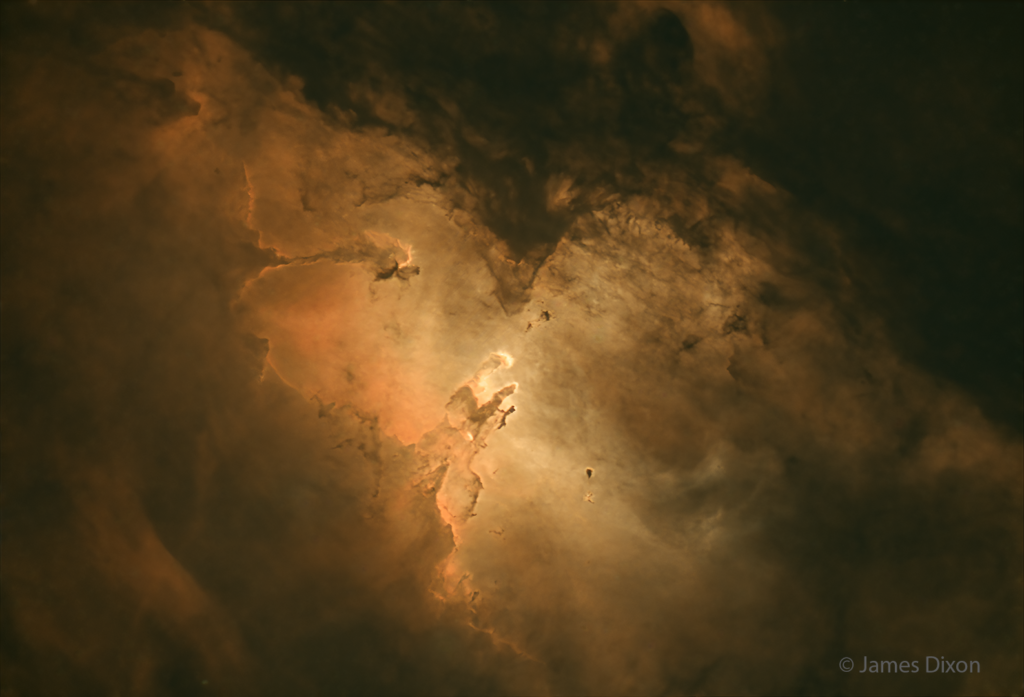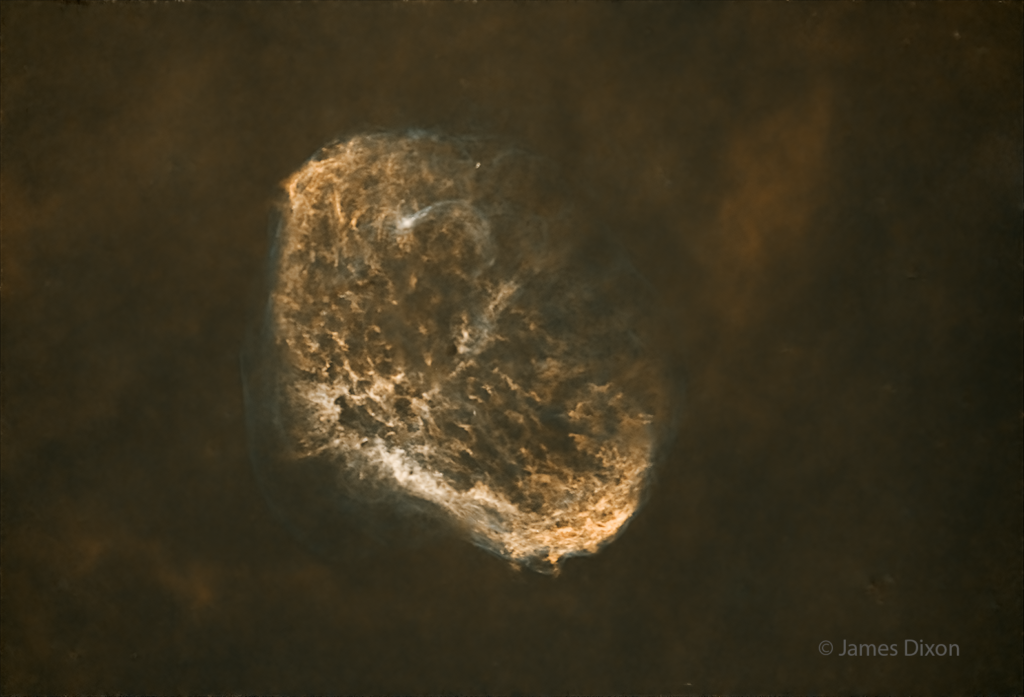Friday, August 26, 2022 was a good night to observe. I set up my 11″ SCT, Elf, with my ZWO ASI 294 Pro camera at f/6.3. I started with the Eagle Nebula (M16) in Serpens then later I switched to the Crescent Nebula in Cygnus. In both cases, I set up a session of 30 5 minute images at a gain of 300. This means a total of as much as 2.5 hours. The first finished at about 12:30 and the other at 3AM. Around midnight I noticed the Milky Way very bright and that the Pleiades had cleared the trees. Then, I spotted bright orange/red “star” through a gap in the trees that I knew immediately had to be Mars. I had lost track of it and now it was at least two magnitudes brighter than it was the last time I saw it. When I finished and left at 3:40, Orion was just rising.
Both of these images were shot and processed similarly. I used StarNet++ to remove the stars so that I could process the nebula separately.


